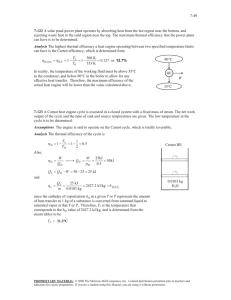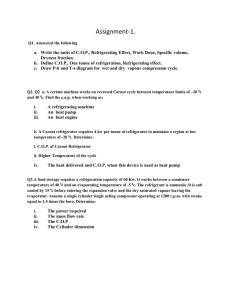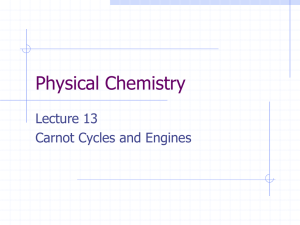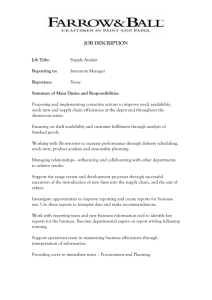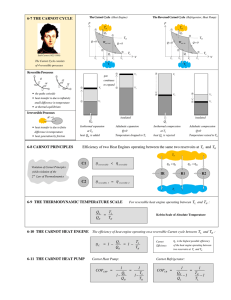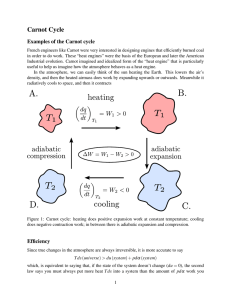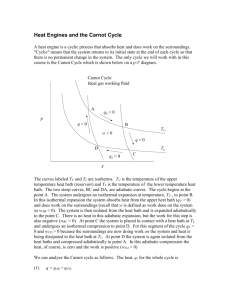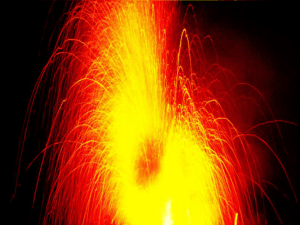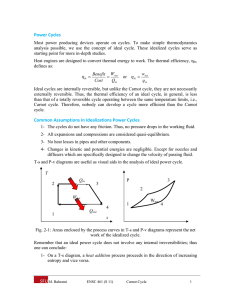EGEE 102 Lesson 3 Review - e
advertisement
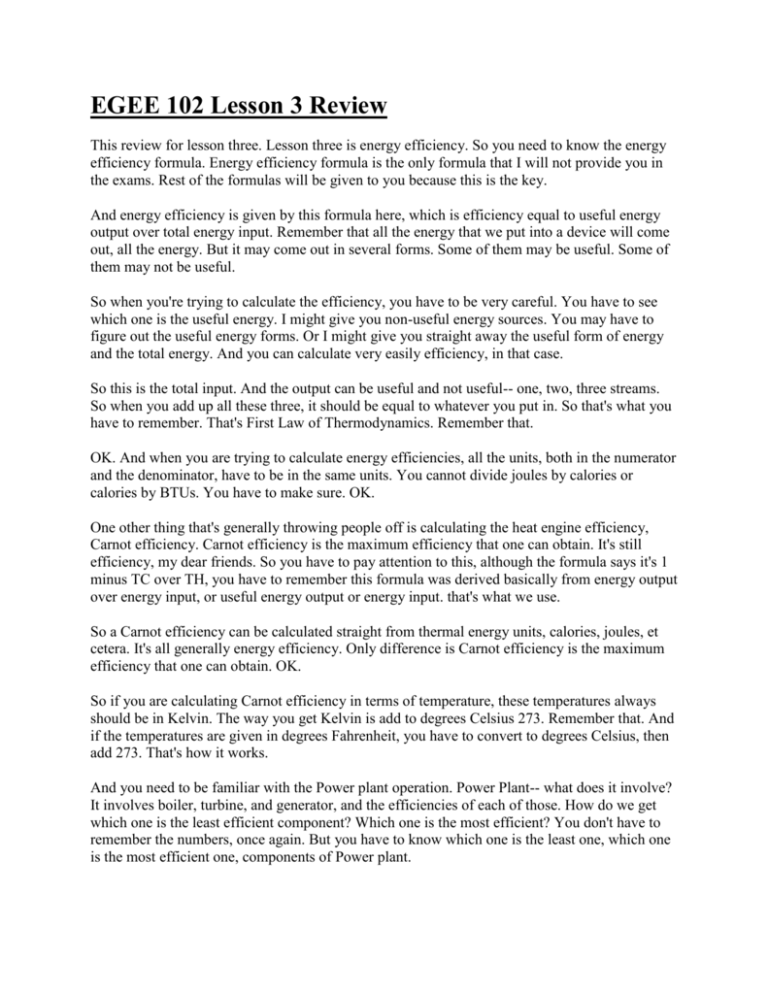
EGEE 102 Lesson 3 Review This review for lesson three. Lesson three is energy efficiency. So you need to know the energy efficiency formula. Energy efficiency formula is the only formula that I will not provide you in the exams. Rest of the formulas will be given to you because this is the key. And energy efficiency is given by this formula here, which is efficiency equal to useful energy output over total energy input. Remember that all the energy that we put into a device will come out, all the energy. But it may come out in several forms. Some of them may be useful. Some of them may not be useful. So when you're trying to calculate the efficiency, you have to be very careful. You have to see which one is the useful energy. I might give you non-useful energy sources. You may have to figure out the useful energy forms. Or I might give you straight away the useful form of energy and the total energy. And you can calculate very easily efficiency, in that case. So this is the total input. And the output can be useful and not useful-- one, two, three streams. So when you add up all these three, it should be equal to whatever you put in. So that's what you have to remember. That's First Law of Thermodynamics. Remember that. OK. And when you are trying to calculate energy efficiencies, all the units, both in the numerator and the denominator, have to be in the same units. You cannot divide joules by calories or calories by BTUs. You have to make sure. OK. One other thing that's generally throwing people off is calculating the heat engine efficiency, Carnot efficiency. Carnot efficiency is the maximum efficiency that one can obtain. It's still efficiency, my dear friends. So you have to pay attention to this, although the formula says it's 1 minus TC over TH, you have to remember this formula was derived basically from energy output over energy input, or useful energy output or energy input. that's what we use. So a Carnot efficiency can be calculated straight from thermal energy units, calories, joules, et cetera. It's all generally energy efficiency. Only difference is Carnot efficiency is the maximum efficiency that one can obtain. OK. So if you are calculating Carnot efficiency in terms of temperature, these temperatures always should be in Kelvin. The way you get Kelvin is add to degrees Celsius 273. Remember that. And if the temperatures are given in degrees Fahrenheit, you have to convert to degrees Celsius, then add 273. That's how it works. And you need to be familiar with the Power plant operation. Power Plant-- what does it involve? It involves boiler, turbine, and generator, and the efficiencies of each of those. How do we get which one is the least efficient component? Which one is the most efficient? You don't have to remember the numbers, once again. But you have to know which one is the least one, which one is the most efficient one, components of Power plant. And you should also be able to calculate the overall efficiency given the step efficiencies. So overall efficiency equal to product of step efficiencies expressed as fractions or decimals. In other words, if one processes is 50% efficient, and the other one is 30% efficient, you have to multiply 0.5 by 0.3. That's how you get the overall efficiency. Overall efficiency is always less than the lowest efficiency of each of these steps. And when you are looking at energy conversions, you have to know which energy conversions are taking place in the device. It's like which is the most desirable output? Which is the undesirable output? So those are basically the important points that you need to remember. And there will be four or five, at least, numerical problems based on these concepts in chapter three or lesson three. Be careful about that. And always have a calculator with you. And remember these important points before you do practice questions. Again, do as many practice questions as possible, at least five, six, seven times those practice questions. And then you can take the exam. All right? OK. Good luck.
